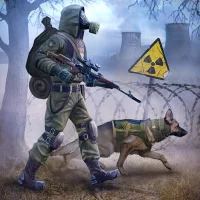
Latest Version
1.1.7\"},{\"releaseDate\":\"2024-05-09
October 18, 2025
killer in us 3D
Games
iOS
5.9 MB
0
Free
Report a Problem
More About killer in us
The Complex Dynamics of Innocence and Guilt in Society
In every society, a delicate balance exists between innocence and guilt, where the roles of individuals can often blur. This article delves into the intricate relationships between those who perform tasks, those who commit acts of violence, and the vigilant observers who seek to maintain order. Understanding these dynamics is crucial for fostering a safer and more just community.
The Role of Innocents in Society
Innocents are often seen as the backbone of any community. They engage in various tasks that contribute to the well-being and functionality of society. From everyday jobs to volunteer work, these individuals embody the principles of hard work and dedication. Their actions not only support their families but also enhance the quality of life for others.
Innocents are characterized by their commitment to ethical behavior and their desire to uphold societal norms. They often find themselves in positions where they must navigate the complexities of human interactions, striving to maintain peace and harmony. However, their innocence does not render them immune to the darker aspects of human nature.
The Impact of Violence on Innocents
Unfortunately, the presence of individuals who commit violent acts—often referred to as killers—poses a significant threat to the innocent. These perpetrators disrupt the social fabric, instilling fear and uncertainty within communities. The motivations behind such violence can vary widely, ranging from personal grievances to broader societal issues.
Killers often target innocents, viewing them as easy victims or collateral damage in their pursuit of power or revenge. This tragic reality highlights the vulnerability of those who strive to live peacefully. The consequences of such violence extend beyond the immediate victims, affecting families, friends, and entire communities.
The Vigilance of Innocents Against Violence
In response to the threat posed by killers, innocents often take on the role of vigilant observers. They become the eyes and ears of their communities, working to identify and report suspicious activities. This proactive approach is essential for maintaining safety and security.
Community watch programs, neighborhood associations, and local advocacy groups are examples of how innocents can band together to combat violence. By fostering a sense of collective responsibility, they empower themselves and others to stand against wrongdoing. This vigilance not only helps to deter potential threats but also strengthens community bonds.
Building a Safer Community
To create a safer environment, it is essential to address the root causes of violence. This involves understanding the social, economic, and psychological factors that contribute to criminal behavior. By investing in education, mental health services, and community development, societies can reduce the likelihood of individuals resorting to violence.
Moreover, fostering open communication between law enforcement and community members is vital. When innocents feel comfortable reporting suspicious activities, it enhances the effectiveness of crime prevention efforts. Building trust between these groups can lead to more effective policing and a greater sense of security for all.
The Importance of Empathy and Understanding
While it is easy to categorize individuals as either innocent or guilty, it is crucial to recognize the complexities of human behavior. Many killers may have experienced trauma or hardship that led them down a dark path. By promoting empathy and understanding, communities can work towards rehabilitation rather than solely punishment.
Programs that focus on conflict resolution, mental health support, and community engagement can help address the underlying issues that contribute to violence. By providing resources and support, societies can transform potential killers into productive members of the community.
Conclusion: A Collective Responsibility
The interplay between innocents, killers, and vigilant observers is a reflection of the broader societal dynamics at play. Innocents perform essential tasks that uphold the community, while killers threaten its stability. However, through vigilance, empathy, and proactive measures, communities can work together to create a safer environment for all.
Ultimately, it is a collective responsibility to foster understanding and support among individuals. By addressing the root causes of violence and promoting a culture of empathy, societies can pave the way for a brighter, more peaceful future.
Rate the App
User Reviews
Popular Apps










Editor's Choice


























